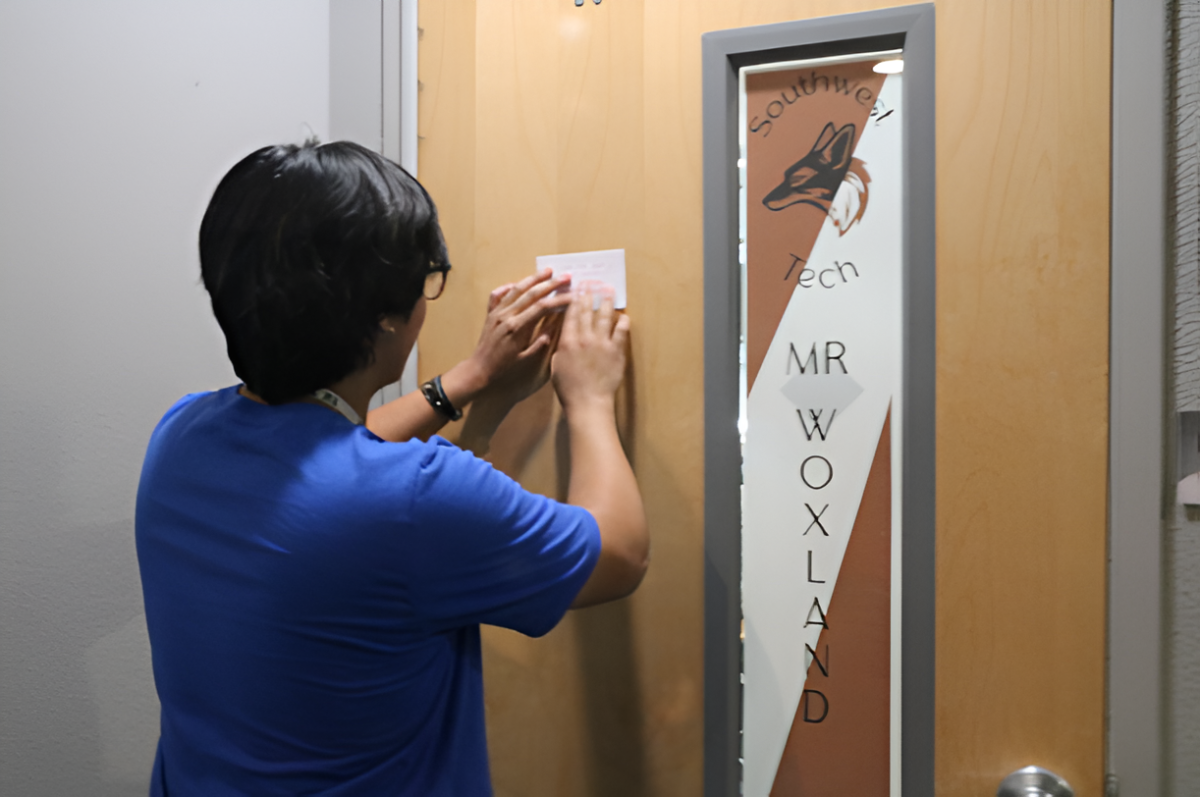On Wednesday March 9, 2011, Clark County School District Board of Trustee President, Carolyn Edwards, held her District F Advisory Board meeting at the SWCTA Coyote Ballroom at 5:30 p.m. Over 50 people were in attendance and half of that number consisting of SWCTA staff and students. The main topic addressed that evening was the possible $400 million in budget cuts to the district.
One suggestion brought up during the meeting was the option of implementing 4-day school weeks. Edwards said it is being considered, but it places too much of a burden on families in the community. Parents of younger children would have to find a babysitter or daycare facility to watch over their children while they are at work on the fifth day.
“The only place you really save is food service, which pays for itself, and transportation,” adds Edwards.
Another major concern was block scheduling and it’s possible elimination from CTA and magnet schools; all other schools in the district have already lost block scheduling. Without block scheduling, students would earn less credits and the program classes available would be decreased because of the lack of available extra class periods.
“As I understand it, there is no other way to run your programs,” responds Edwards.
Students who failed a class would have to retake that class online, after school, or during the summer. Credit retrieval periods during the school day would no longer be an option, unless the student had an elective space to utilize.
A CCSD budget survey, that closed on March 14th, presented several different options for cost-cutting. The first option is to eliminate athletic programs and implement a pay-for-play program. Students and audience members who participated in the online survey, in which the goal was to total $400 million in cuts, were distressed over this issue because of the loss of athletic scholarship opportunities, the disadvantage to low-income families, and the reduction of opportunities for students to become “well-rounded.”
Edwards further explained the concerns for the loss of athletic programs by stating a base rate, or a fee similar to course fees, would be implemented; however, there is still some form of “pay-for-play” because there are various outside costs involved with being involved with an athletic program. The money for fees would be applied towards the upkeep of fields, the payment of security and maintenance, and the electricity bills for stadium lights.
Co-curricular activities, such as clubs, may be eliminated.
“Sports, band, choir, orchestra, and extracurriculars keep kids in school,” states Edwards.
This would put students in Nevada at a disadvantage to students in other states in terms of becoming a “well-rounded” student for college and scholarship applications.
The most heated topic amongst students was also addressed during the meeting. Busing to career and technical academies may be eliminated causing enrollment to fall, programs to lose their numbers, and CTA’s would only be able to provide this form of education to an even smaller group of students.
“Eliminating busing saves us some money, but not as much as you think it would,” comments Edwards.
Instead of just cutting services, Edwards told her audience that they are looking into various forms of increasing revenue including, but not limited to, placing cell phone towers on school campuses and selling advertisements to go on school buses.
The timeline for the budget is exceedingly short. Before April, a preliminary budget must be created. In mid-May, the school district will have a finalized budget, before the legislative session has ended and a final decision to the state budget has been made. In June, after the state budget is finalized, CCSD will revise the submitted district budget to come up with a finalized budget that will not be official be until student count day in November when they may adjust the budget based on enrollment numbers.



![Practicing the basic skills of nursing, sophomore Natalia Yancey gets her heartbeat checked with a stethoscope. Sophomore nursing students reviewed skills from freshman year. “I’ve always wanted to be in the medical field; it’s been my dream forever,” Yancey said. “Doing [practice skills] so early on is not only an amazing opportunity, but it helps me to prepare for my future.”](https://southwestshadow.com/wp-content/uploads/2025/10/IMG_9843-1200x800.jpg)


